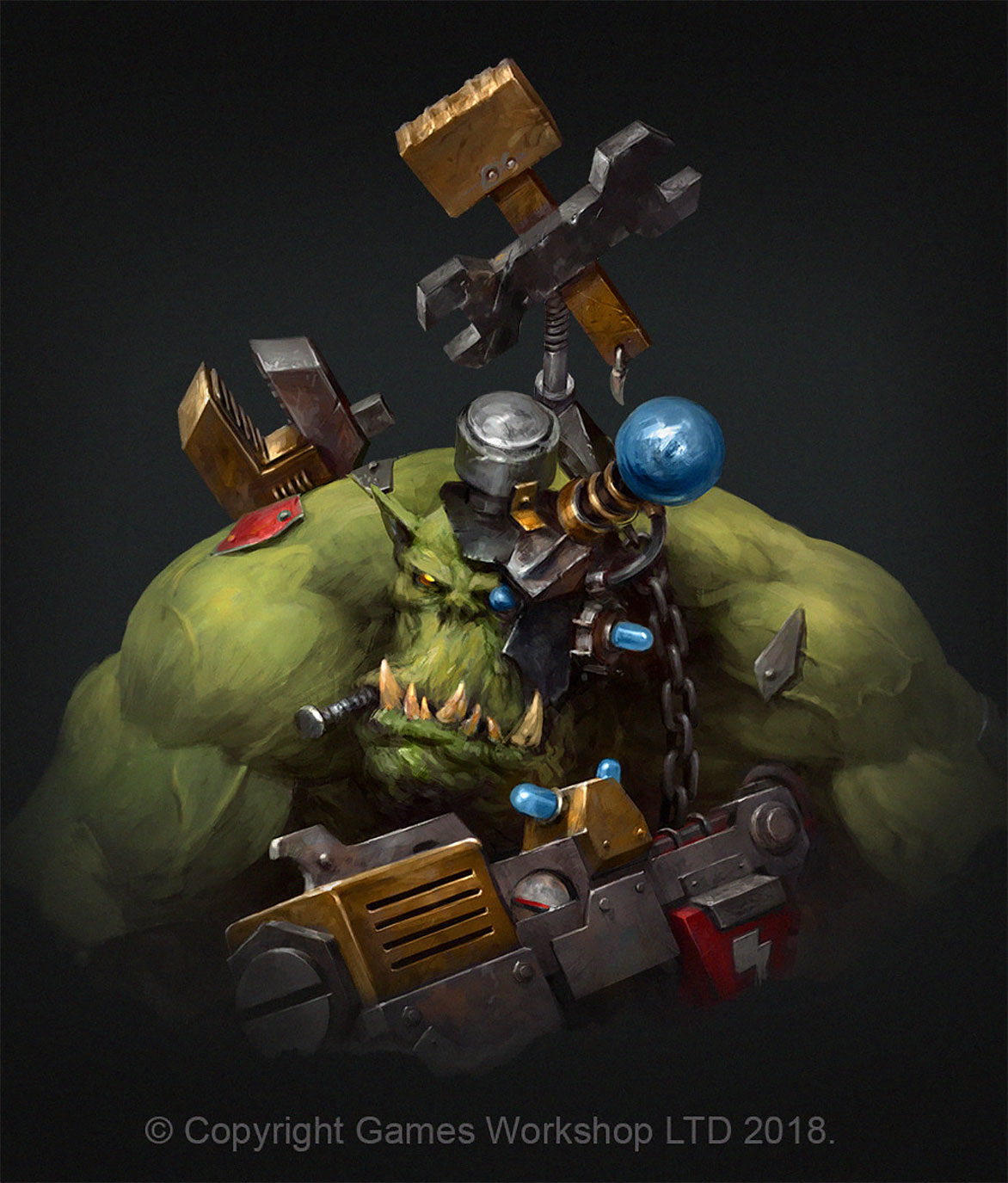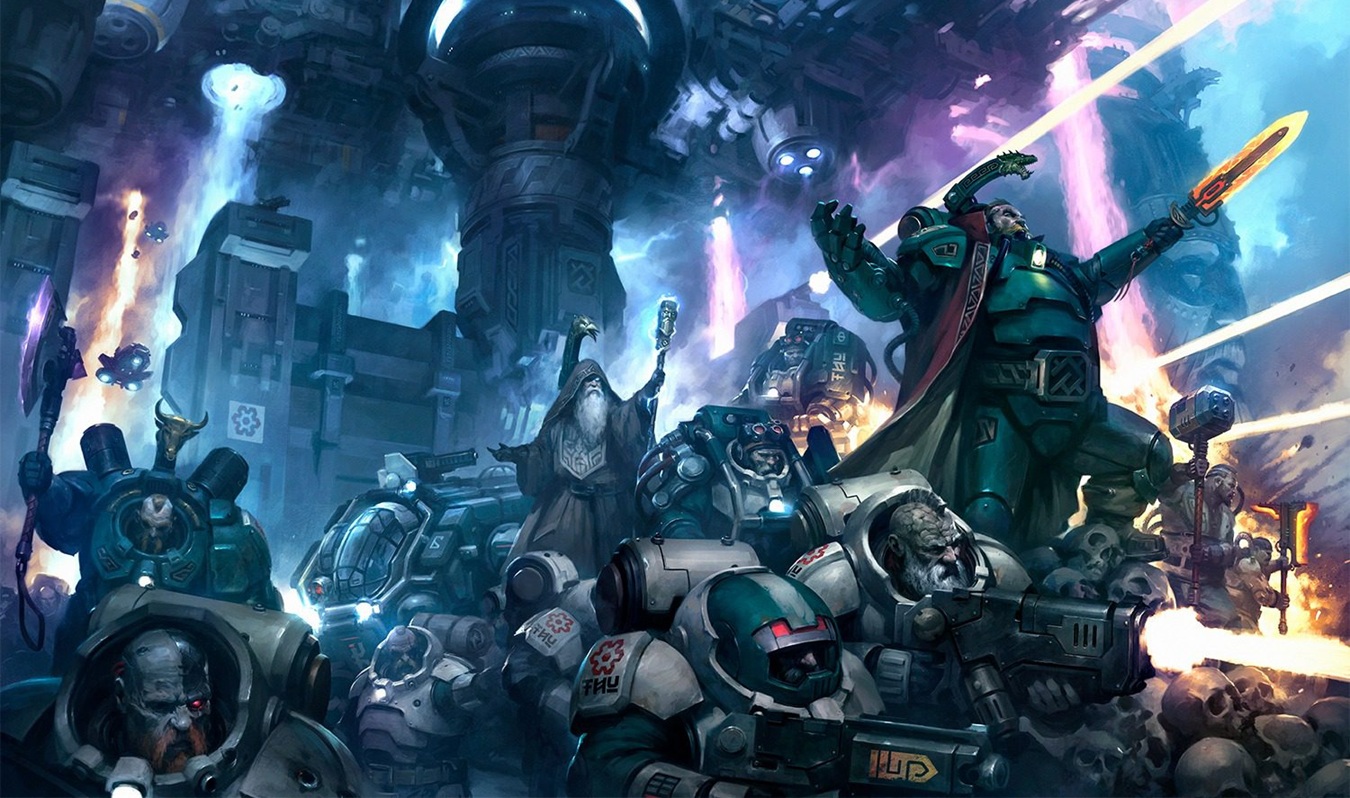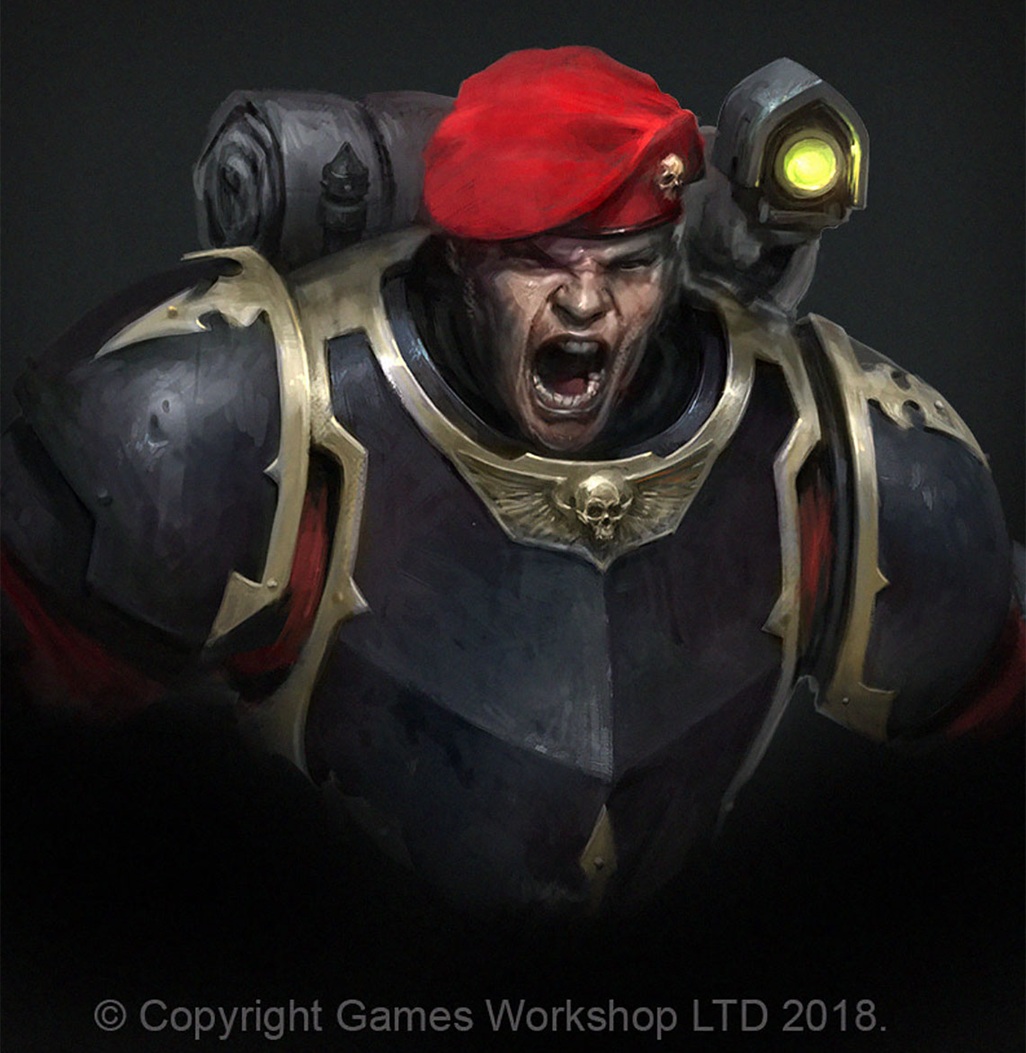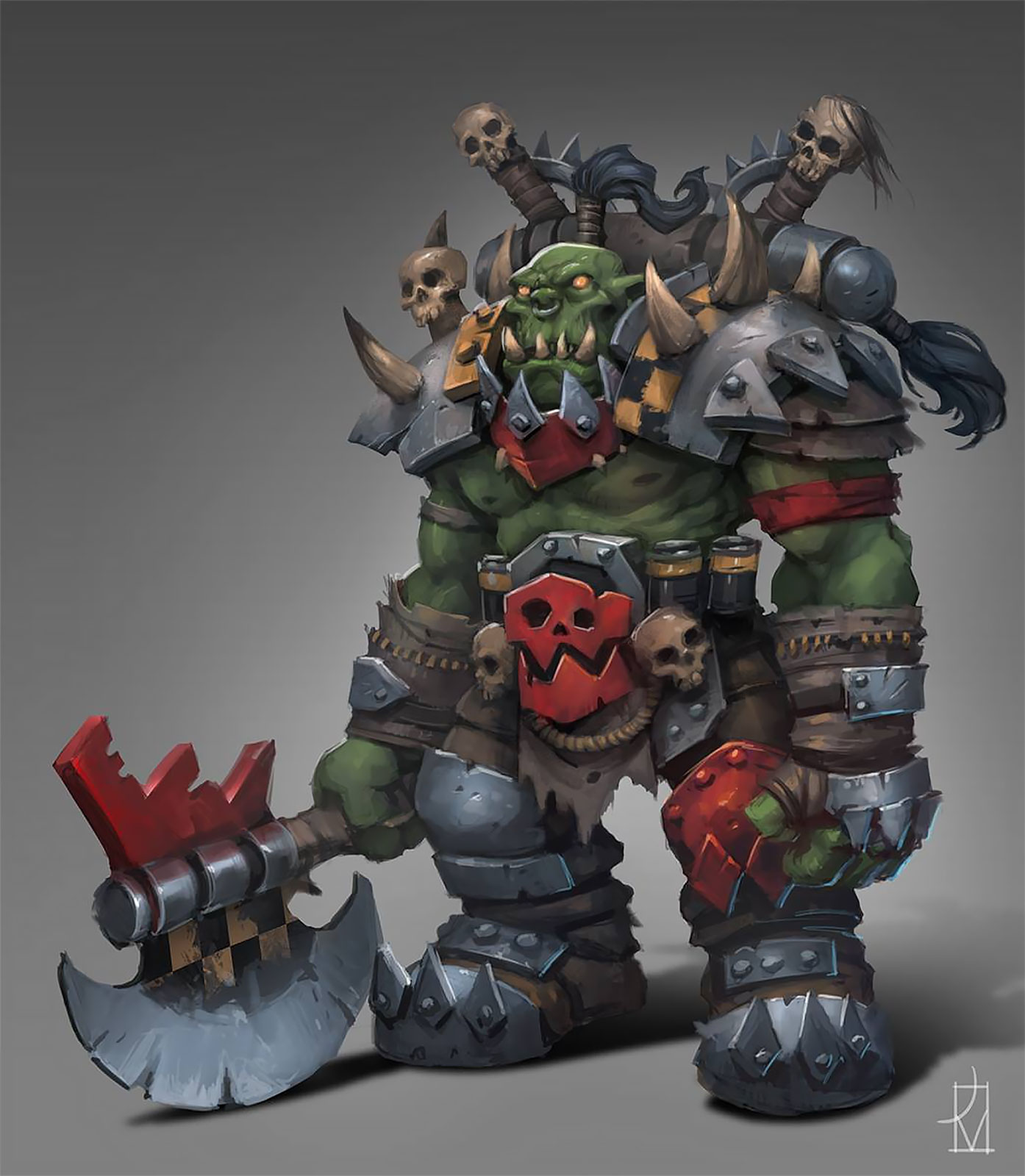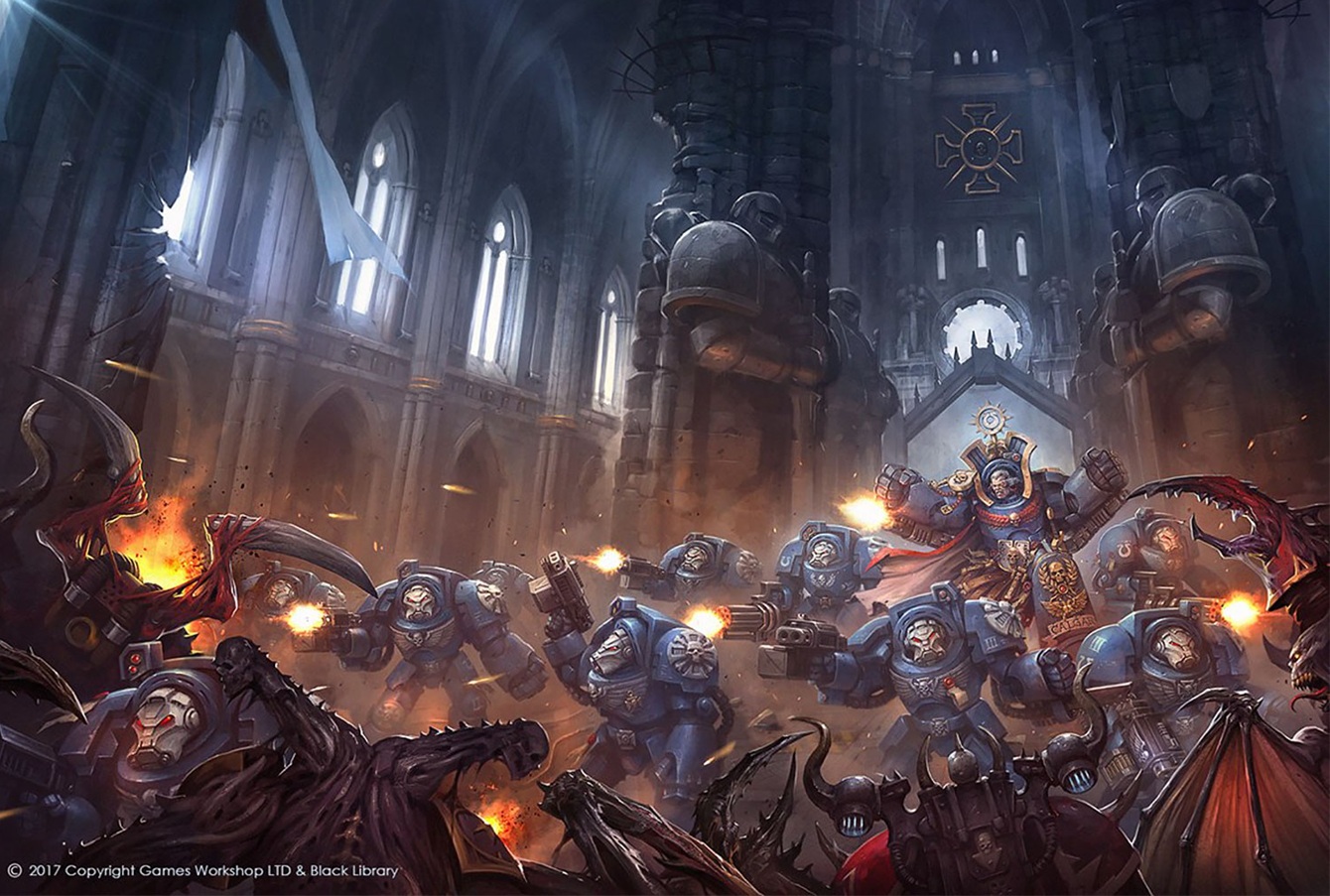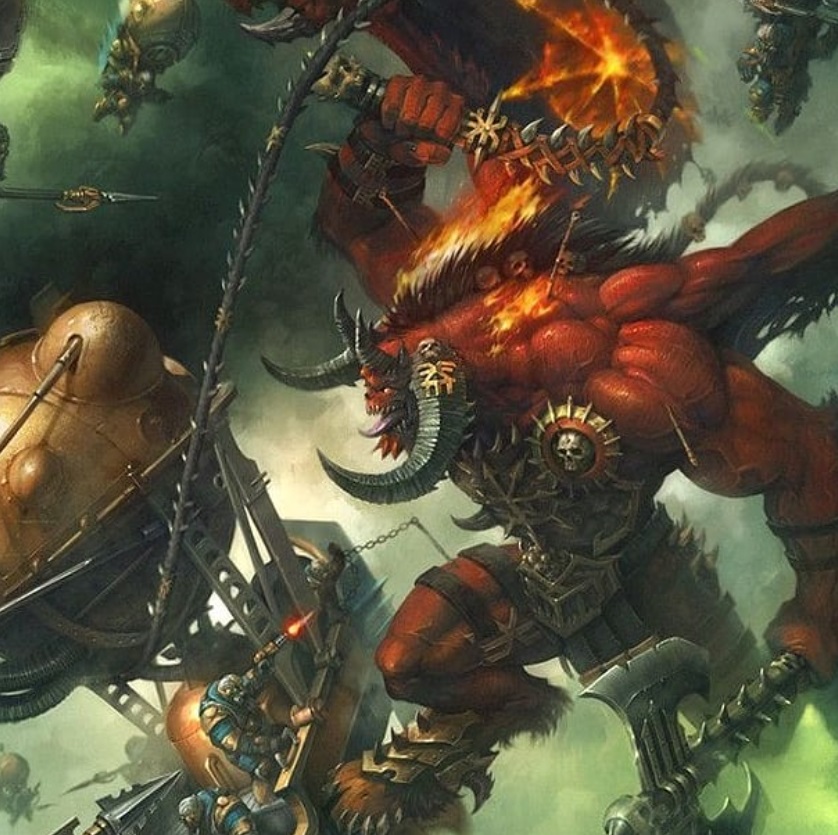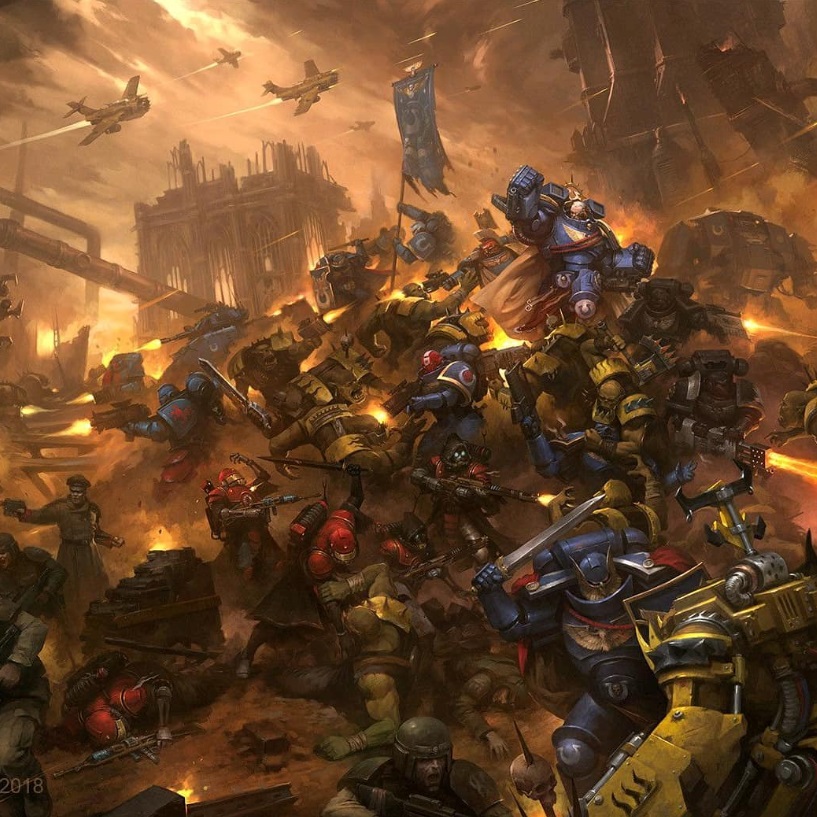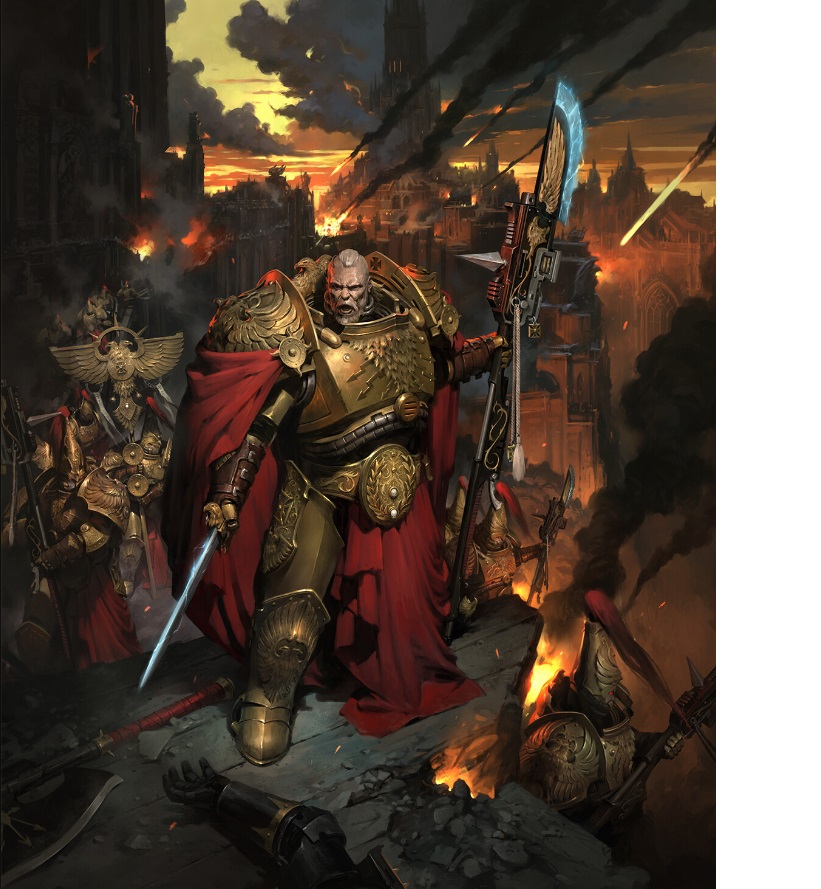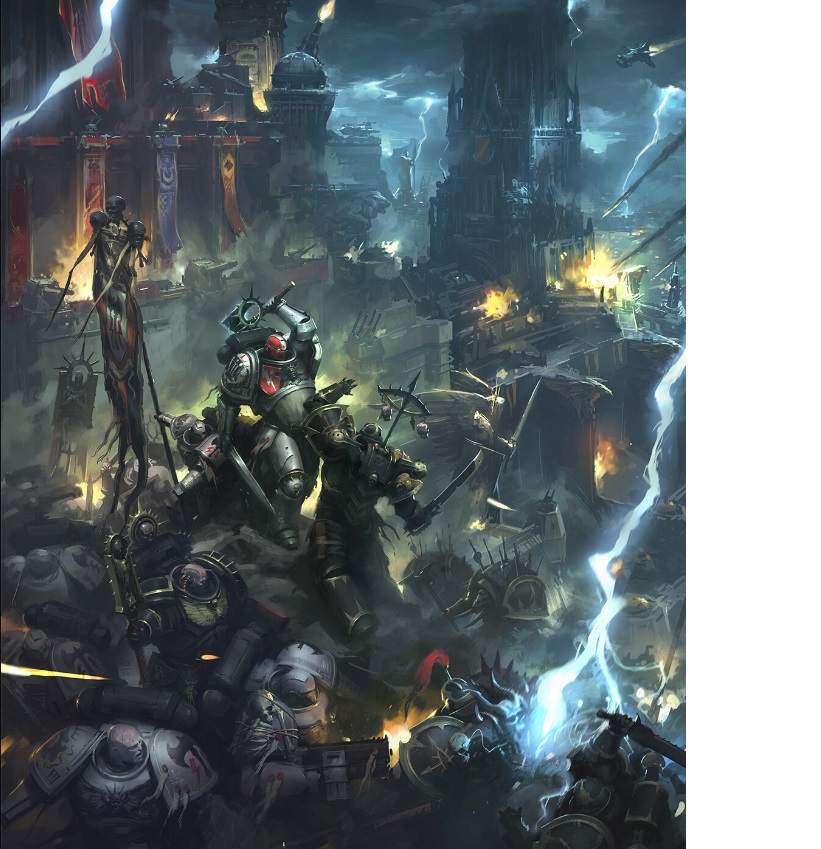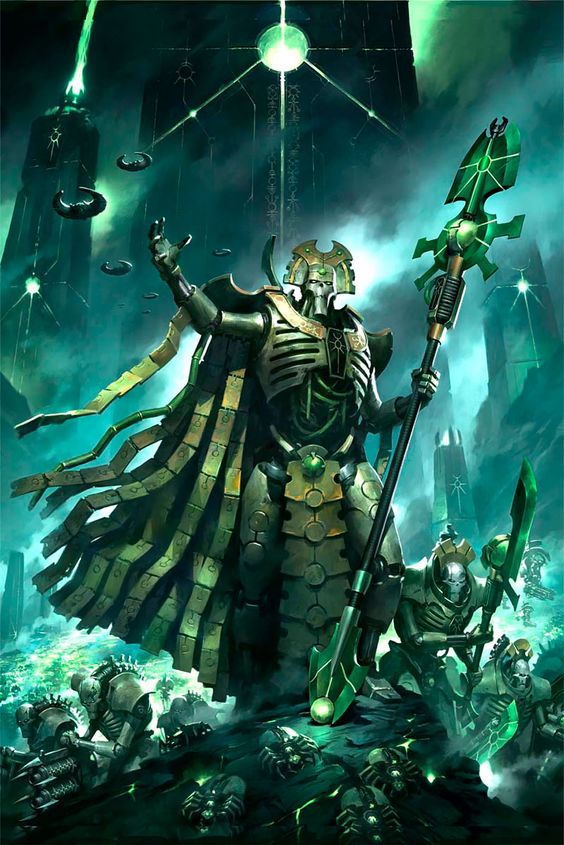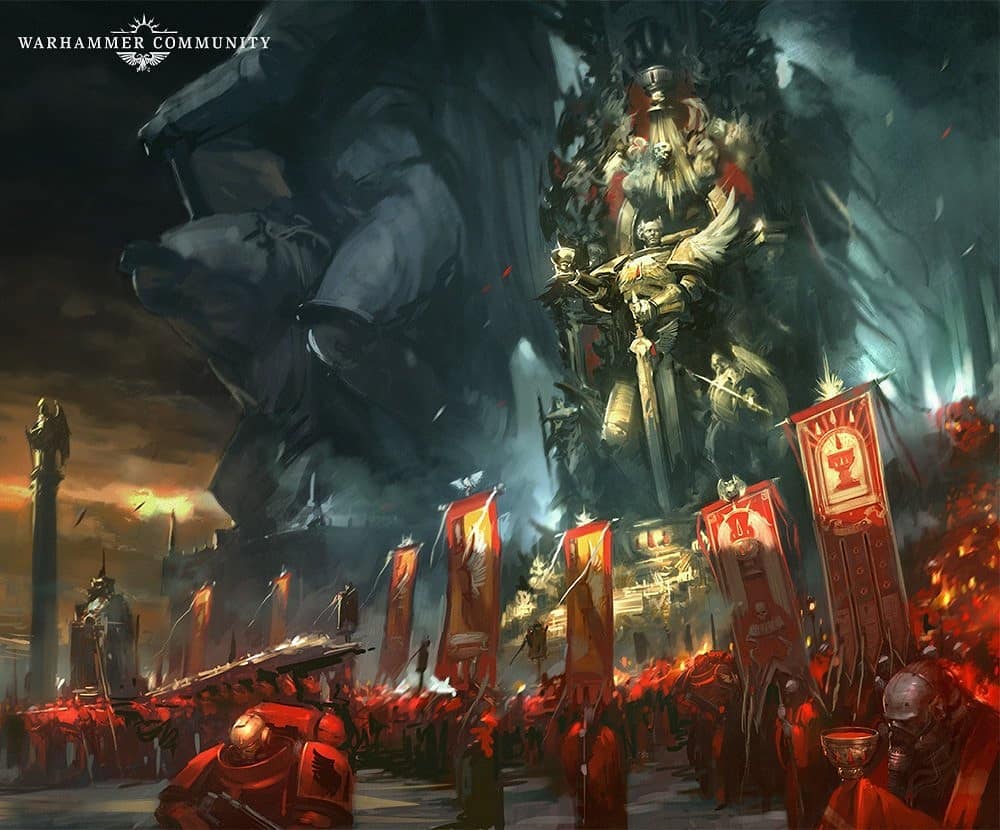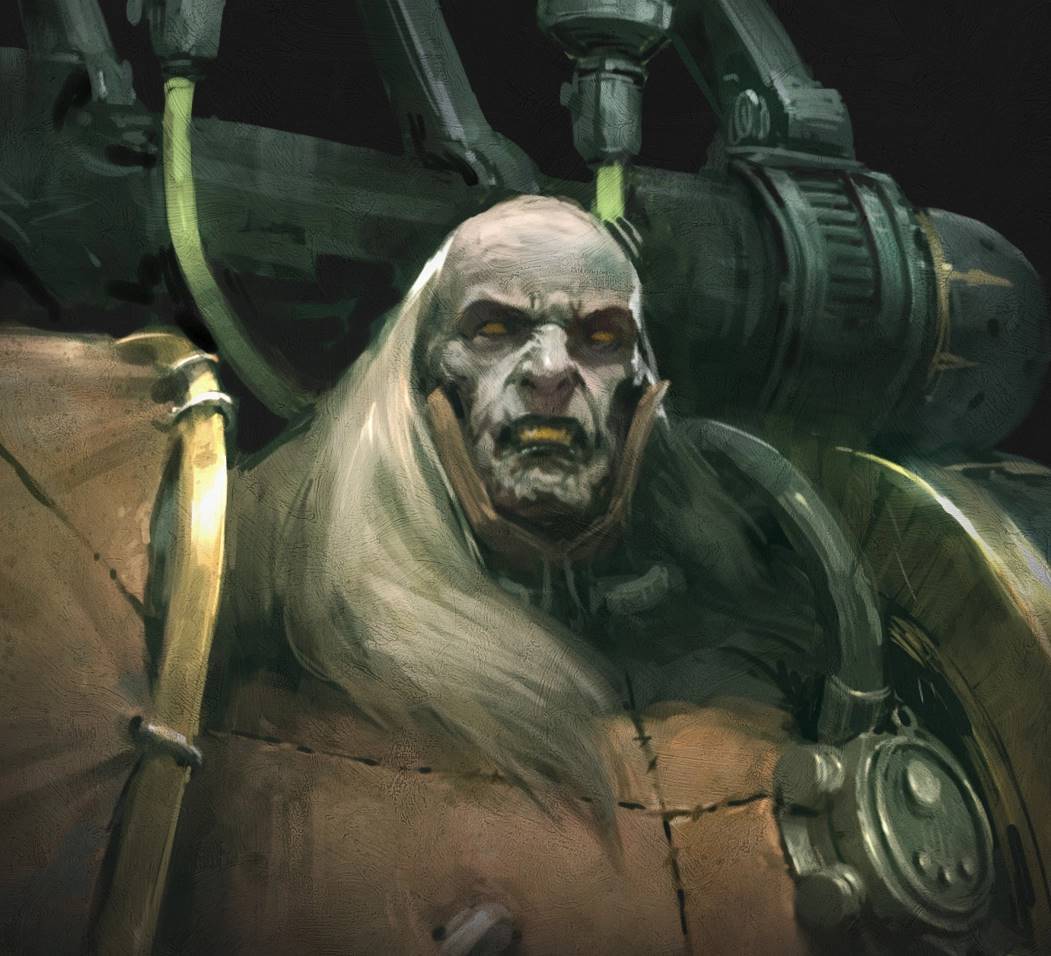Ultramarine, Sister of Battle, Adeptus Mechanicus, Imperial Guards
Artist: Jaime Martinez Source: Jaime Martinez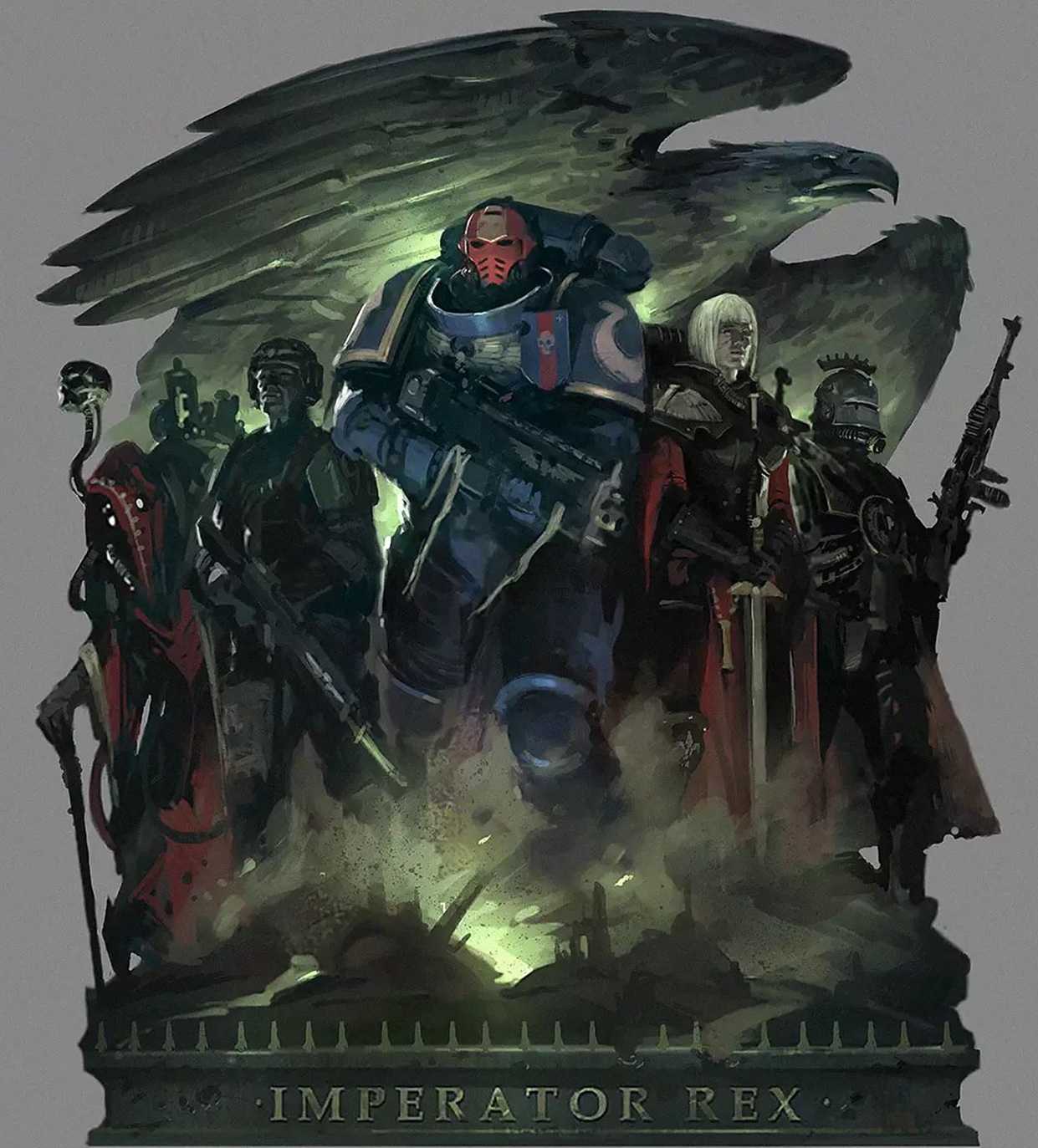
Imperator Rex: Icons of the Imperium
The Central Figure – The Ultramarine
At the heart of this stirring artwork stands a resolute Ultramarine, instantly recognizable by his cobalt blue armor and red helmet, indicating his status as a sergeant. The bulky frame of his Mark VII power armor radiates weight and strength, while his bolter, clutched at the ready, reinforces the impression of unwavering vigilance. He marches forward through smoke and ash, boots cracking the ground with every step, as if he alone bears the burden of the Imperium. A subtle glow outlines his silhouette, symbolizing both divine favor and unrelenting purpose. He is not just a soldier but a symbol of Imperial discipline and glory, raised on the teachings of the Codex Astartes. The Ultramarines hail from the world of Macragge and are famed for their strategic brilliance and political influence, having remained a cornerstone of the Imperium since the Great Crusade.
The Warrior Saint – Adepta Sororitas
To the right of the Ultramarine is a solemn figure clad in the sacred armor of the Adepta Sororitas. Her silver-white hair frames a pale, unwavering face as she stands with her two hands clasped around the hilt of a longsword, tip resting at her feet. Her armor is decorated with purity seals and ecclesiastical symbols, and a red cape flares behind her, revealing her rank as more than a simple Sister. She appears statuesque, like a living relic, calm amid the storm. She stands for the unyielding faith of the Imperium, a living martyr fueled by the Emperor’s wrath and mercy. The Sisters of Battle were born from the Age of Apostasy, and their role has since been to defend the faith, destroy heresy, and act as firebrands of divine judgment across the galaxy.
The Grit of Humanity – Astra Militarum Soldier
Behind and to the left of the Ultramarine stands a soldier of the Astra Militarum, the backbone of the Imperium. Clad in flak armor and a combat helmet, he clutches a lasgun and stares outward with cautious alertness. His posture lacks the grandeur of his superhuman ally, but that makes his presence all the more human and relatable. He is every guardsman who has bled on alien soil, every conscript who has held the line when all hope was lost. His figure is shaded and subdued, reminding us that the Guard do not fight for glory but survival. The Astra Militarum’s lore is built on staggering numbers, attritional warfare, and the belief that victory is earned not by strength alone but by endless resolve and sacrifice.
The Servant of Knowledge – Tech-Priest of Mars
To the far left looms a Tech-Priest of the Adeptus Mechanicus, his crimson robes trailing like spilled oil, his face obscured by augmetics and rebreathers. He leans on a staff crowned with sensors or cog-icons, while mechadendrites slither like machine tentacles from beneath his cowl. His presence is cold, almost alien, as green light reflects off metal limbs and data-tethers. He is the Imperium’s arcane engineer, an acolyte of the Machine God, whose prayers are algorithms and whose miracles are powered by plasma cores. The Mechanicus hold that knowledge is sacred and must be preserved—even if it is barely understood. Their lore tells of ancient Martian cults, lost technologies, and the uneasy truce they maintain with the rest of the Imperium to keep its war engine running.
The Voice of the Throne – Imperial Ecclesiarch or Confessor
On the rightmost edge stands a grim preacher of the Imperial Creed, hooded or crowned with a spiked halo of office. He holds aloft either a weapon or relic, while the other hand may carry the Imperial Creed or sacred text. His vestments are austere yet regal, signifying both his authority and monastic dedication. He appears wrathful, a herald of fire and sermon, inciting faith as a weapon of war. His kind keeps the Imperium spiritually united, stoking devotion with words, fire, and righteous punishment. The Ecclesiarchy, often dangerous in its zeal, emerged from the ashes of political upheaval and now ensures that the Emperor is not just obeyed, but worshipped as a god.
The Symbol Above – The Emperor’s Shadow
Spanning the entire scene is the ghostly form of an Aquila, the two-headed eagle of the Imperium, wings outstretched in silent vigilance. It looms like a divine omen, neither passive nor active, but ever-watching. The green glow illuminating it from below gives the impression of divine radiance filtered through ash and smoke. It connects all figures beneath it—the warrior, the faithful, the builder, the servant, and the mortal—as disparate parts of a vast and crumbling whole. The Aquila signifies the Emperor’s eternal rule, representing both unity and tyranny, triumph and torment. This image, titled “Imperator Rex,” becomes a visual hymn to the God-Emperor—an empire held together not by hope, but by sacrifice and fear.


